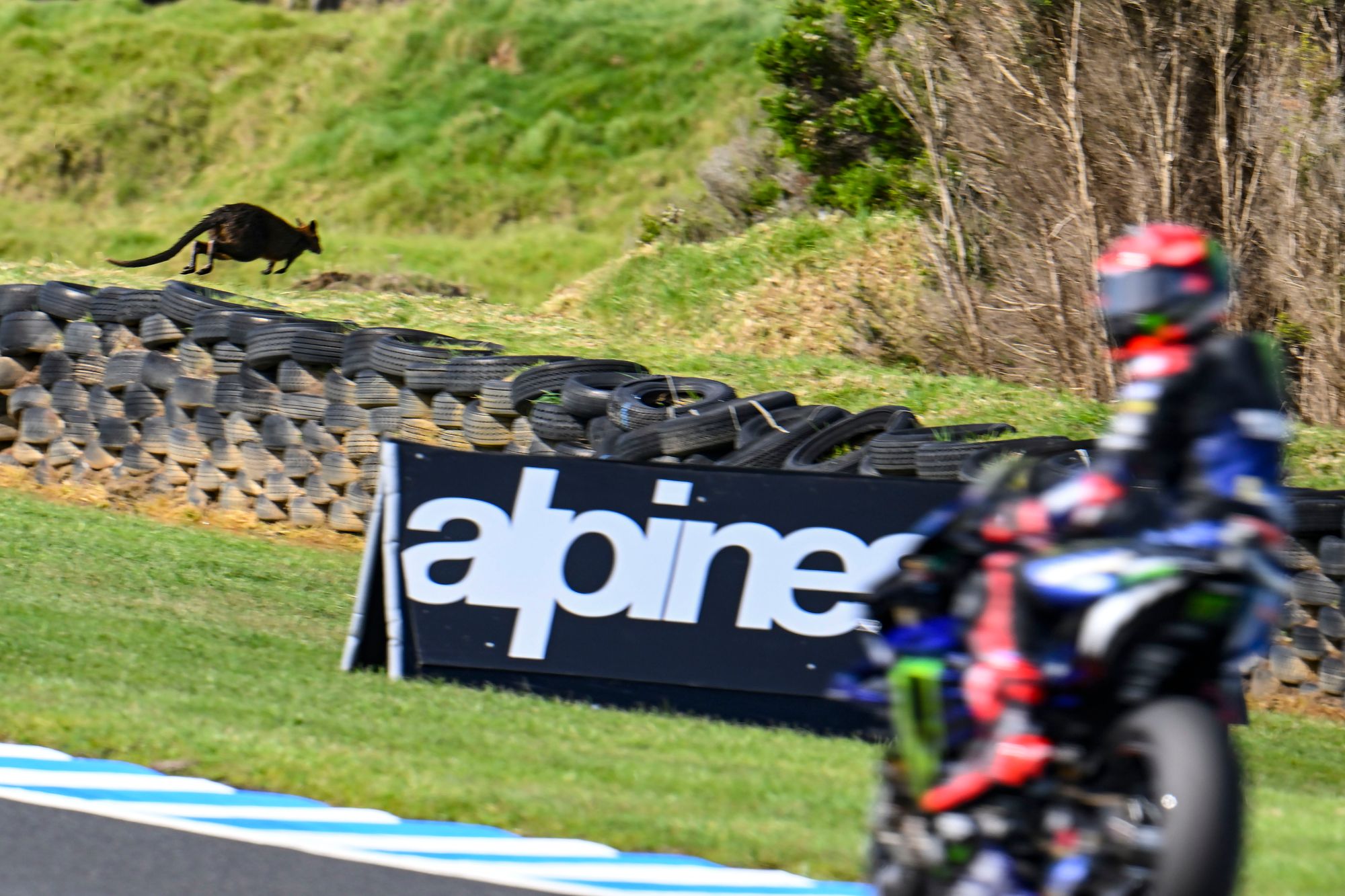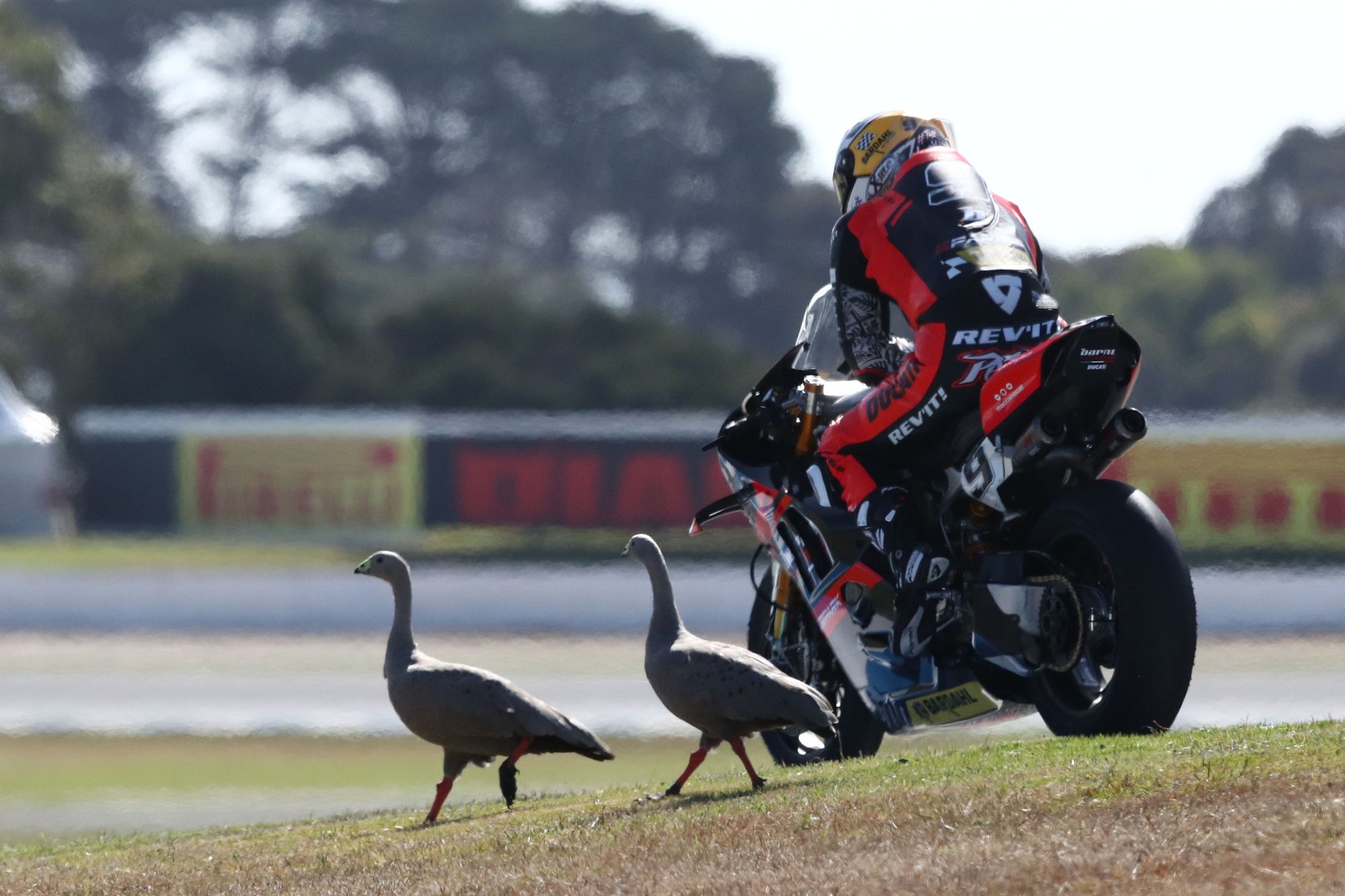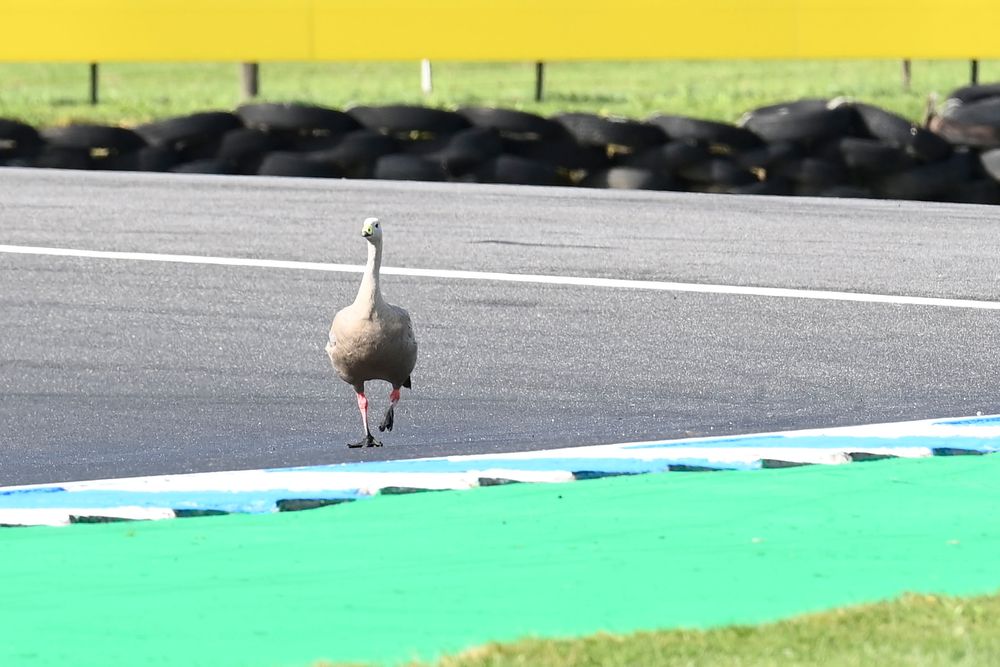This weekend’s Australian Grand Prix has marked a welcome return for the MotoGP paddock to the iconic seaside circuit of Phillip Island. It has also featured the usual disruption to track activities at the track thanks to the presence of a less welcome visitor: the huge and fearless Cape Barren geese that also call the south coast island home and frequently cause stoppages in track action.
This was again the case on the opening day of this year’s event, with Moto2’s second practice session briefly halted by two of the birds (which can weigh up to eight kilograms) walking nonchalantly across the circuit and bringing out the red flags.
🚩 Red Flag 🚩
— MotoGP™🏁 (@MotoGP) October 20, 2023
They're back and they seem to love #Moto2 machinery! 🐦 The session has been brought to a halt #AustralianGP 🇦🇺 pic.twitter.com/c55CSpU82B
Though the geese are the most common cause of track disruption, they’re not the only animals that have strayed onto the track in the past, with wallabies and kangaroos also causing disruption in previous years. But, with the animals designated as protected species across all of Australia’s territory, the options for dealing with them have so far been limited.

However, according to Graeme Coles from Full Flight Birds of Prey - a falconry company based in Ballarat, a few hours north of the Phillip Island circuit - there’s a clear solution that would work to alleviate the issues: using raptors to help scare away the geese without harming them.
Working as an industry partner with Federation University ecologist Professor Rob Wallis, the pair (in collaboration with other stakeholders) have developed strategies to help keep nuisance animals away from farms and sporting events that they believe could be successfully rolled out at Phillip Island as well.
"The alternative for people controlling pests is you apply for one-off permits from the government each time,” the academic explained. “So, for example, if kangaroos are causing damage to fences or pastures on properties, farmers could engage a kangaroo shooter, but they would need to apply for a permit every single time.
"My research partners wanted a long-term and scientifically based approach to their work. I became involved as the person to advise on scientific protocols, helping with the animal ethics approvals and subsequently wildlife research approvals to government, and to also assist in publishing the findings.”

Since then, Wallis and Coles have worked with multiple sporting arenas in the state of Victoria to help manage wildlife during major events, most notably with the Flemington Racecourse during the Melbourne Cup, one of the world’s richest and most prestigious horse races. And while they’ve not specifically targeted Cape Barren geese before, Wallis said he believes that an effective strategy could be implemented for Phillip Island (which also hosts World Superbikes) as well.
“We’d be looking at getting an eagle around there, and certainly that would help with getting the geese away from the area,” he explained. “In some cases, we don’t even have to fly - just having the eagle there is enough.
“What we do with the horse racing, most of the time we’re not actually flying while they’re on the track. We do it prior to the race to clear the track and make sure everything is nice and bird-free.
“We could get in there prior to the bikes going on track, put the eagle up, scare them all off, and hopefully buy enough time to have the race without them getting in the way.”



